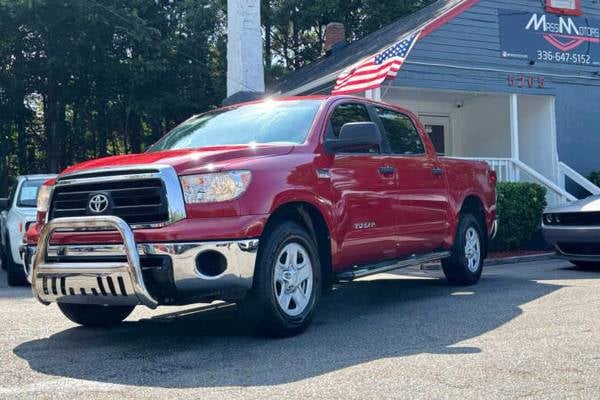2012 Toyota Tundra Review
Price: $12,999
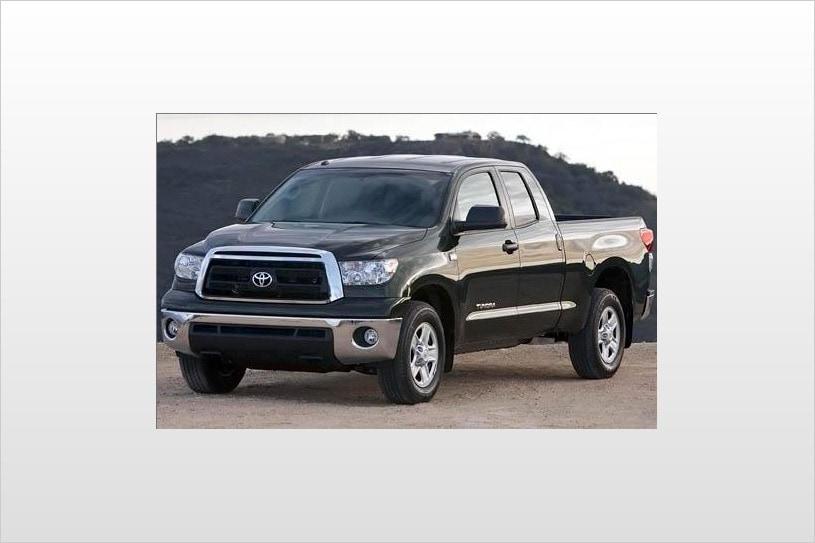 View 134 more photos
View 134 more photos View 139 more photos
View 139 more photos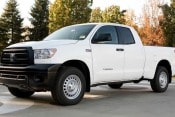 View 139 more photos
View 139 more photos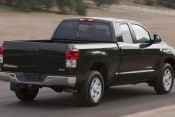 View 139 more photos
View 139 more photos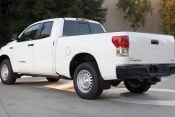 View 139 more photos
View 139 more photos+135
Toyota Tundra model years
Toyota Tundra types
- Double Cab
- Regular Cab
- CrewMax Cab
Edmunds' Expert Review
by the Edmunds Experts
Pros
- Strong V8 powertrains
- capable six-speed automatic
- large Double Cab with traditional rear doors
- colossal CrewMax cab
- one axle ratio fits all.
Cons
- Interior design missteps
- lively ride
- feels more cumbersome to drive than competitors.
What’s new
The 2012 Toyota Tundra has just a few minor changes including simplified option packages, a new Chrome Appearance package and a standard rearview camera on Limited models.
Edmunds says
The 2012 Toyota Tundra combines strong powertrain choices and a selection of spacious cabs to deliver a real workhorse of a pickup.
For sale near Boydton, VA
311 listings
- 151,573 miles
- Insurance loss reported, 4 owners, personal use only
- 5'7” bed, 5.7l, 8cyl
- Massi Motors (50 mi away)
- Tire Pressure Warnin...
- Multi-Zone Climate C...
- Rear Bench Seats
- Stability Control
- Aux Audio Inputs
Close
Located in Durham, NC
2012 Toyota Tundra *Engine 5.7L V8 *Transmission Automatic 6-Speed *4X2 *151k miles *Salvage title *AM/FM/XM/Bluetooth radio *Back up camera *Power m...
AutoCheck Vehicle History Summary
Accident Free Vehicle: No
Personal Use Only: Yes
History Provider: AutoCheck
Title Details: Issue reported
Salvage Vehicle: No
Frame Damage: No
Theft History: No
Lemon Status: No
Free History Report: No
Features and Specs:
15 Combined MPG (14 City/18 Highway)
Listing Information:
VIN: 5TFEY5F10CX129816
Stock: 129816
Certified Pre-Owned: No
Listed since: 04-10-2025- $8,999great price$2,303 below market
- 253,846 miles
- 5 accidents, 2 owners, personal use only
- 6'7” bed, 5.7l, 8cyl
- Kinda Auto Sales (72 mi away)
- AWD/4WD
- Tire Pressure Warnin...
- Multi-Zone Climate C...
- Rear Bench Seats
- Stability Control
Close
Located in Clayton, NC
AutoCheck Vehicle History Summary
Accident Free Vehicle: No
Personal Use Only: Yes
History Provider: AutoCheck
Title Details: Clean Title
Salvage Vehicle: No
Frame Damage: No
Theft History: No
Lemon Status: No
Free History Report: No
Features and Specs:
15 Combined MPG (13 City/18 Highway)
Listing Information:
VIN: 5TFUW5F17CX238713
Stock: 238713
Certified Pre-Owned: No
Listed since: 06-29-2025
Vehicle overview
It used to be that full-size pickup trucks were primarily judged on no-nonsense qualities like reliability, durability and competence for the job at hand. By these traditional measures, the 2012 Toyota Tundra can go toe to toe with anything Detroit's Big Three automakers have to offer. These days, though, most people evaluate these trucks beyond their core competencies, and it's here where you'll decide whether the Tundra is for you.
There's no question that the half-ton Tundra rivals its Ford, GM and Ram competitors in everything from towing capacity to the dizzying array of possible configurations. Under the hood you have a choice of three engines, including a 381-horsepower 5.7-liter V8 that allows the Tundra to tow trailers that weigh up to 10,400 pounds.
There are also three body styles, three bed lengths and two trim levels available, culminating in the top-of-the-line CrewMax Limited model with its limolike rear seat and upscale car-style amenities including dual-zone automatic climate control, heated and ventilated front seats and a 12-speaker JBL audio system. Double Cab models also offer an adult-friendly backseat and front-hinged rear doors that make for easier access than the rear-hinged designs found in extended-cab pickups from Ford and GM.
While all this compares favorably with the competition, the Tundra hasn't received significant upgrades since the truck's launch in 2007. This means the big Texas-built Toyota is a few steps behind its more recently remade rivals in key areas. In particular, the Ram 1500 has a coil-spring rear suspension that gives it a comparatively more comfortable ride, while the Ford F-150 has a more advanced engine lineup, while numerous innovative features make it the cutting-edge choice among pickup trucks. The Tundra enjoys a few advantages over the even older Chevrolet Silverado and GMC Sierra, such as a more spacious cabin, but GM's trucks nevertheless remain solid choices.
Most of these advantages and disadvantages are pretty minor. Ultimately, the 2012 Toyota Tundra definitely stands tall as a full-size pickup.
Performance & mpg
The 2012 Toyota Tundra is offered with a choice of three different engines and rear-wheel drive or four-wheel drive.
Rear-wheel-drive Regular and Double Cabs are powered by a 4.0-liter V6 that puts out 270 hp and 278 pound-feet of torque. A five-speed automatic transmission is standard. EPA-estimated fuel economy for this powertrain is 16 mpg city/20 mpg highway and 18 mpg highway.
A 4.6-liter V8 that produces 310 hp and 327 lb-ft of torque is standard on CrewMax, four-wheel-drive and long-bed models, and available as an option on rear-wheel-drive Regular and Double Cab body styles. A six-speed automatic transmission is standard. In Edmunds testing, a four-wheel-drive Tundra with the 4.6-liter V8 went from zero to 60 mph in 7.9 seconds. EPA-estimated fuel economy for this engine is 15 mpg city/20 mph highway and 17 mpg combined with two-wheel drive and 14/19/16 with four-wheel drive.
Topping the Tundra's engine lineup is a 5.7-liter V8 standard on Limited trim levels and optional on the other models. It produces 381 hp and 401 lb-ft of torque, while a six-speed automatic transmission is standard. EPA-estimated fuel economy is 14 mpg city/18 mpg highway and 15 mpg combined for two-wheel-drive models and 13/17/14 for four-wheel-drive versions. A four-wheel-drive Tundra CrewMax with this engine went from zero to 60 mph in 6.9 seconds in Edmunds testing. Tundras equipped with the 5.7-liter V8 and the optional Tow package can pull trailers up to 10,400 pounds.
Safety
The 2012 Toyota Tundra comes standard with antilock brakes (with brake assist), stability and traction control, trailer sway control, front side-impact airbags, side curtain airbags that cover both rows and front knee airbags. In Edmunds brake testing, a Tundra Double Cab with the 4.6-liter V8 came to a stop from 60 mph in 134 feet -- a good distance for a full-size truck.
In government crash tests the Tundra earned an overall score of four stars (out of a possible five), as well as four stars for overall frontal protection and five stars for overall side protection. The Insurance Institute for Highway Safety gave the Tundra its highest rating of "Good" in the frontal-offset, side-impact and roof strength tests.
Driving
When the Tundra was first introduced, any model that carried an engine other than the 5.7-liter V8 was a letdown. However, the midgrade 310-hp 4.6-liter V8 means playing second fiddle isn't necessarily a bad thing. This engine provides all the muscle most truck buyers need, with better fuel economy to boot. The base V6 is one of the brawnier base engines in the segment, but V8 grunt seems like a must in this class. Now, if getting the most V8 grunt is important, the 5.7 isn't the class leader it once was in terms of horsepower, but it remains a champ for towing thanks to its axle ratio and a well-sorted six-speed automatic.
For daily use, the 2012 Toyota Tundra's light steering makes the truck very easy to drive, though it feels bigger than competing trucks. We were satisfied with the Tundra's ride quality a few years ago, but the Ram's coil-spring rear suspension and the Ford F-150's revised, sturdier frame make the Tundra's ride seem stiff-legged by comparison.
Interior
While the interior of the 2012 Toyota Tundra is passable by pickup truck standards and even has a few strong points, the fact that it hasn't been updated in five years makes it seem dated when compared to the more recently redone passenger cabins of its Ford and Ram competitors. The Limited trim level equipped with the Platinum option package does add upscale touches like perforated leather upholstery and heated/ventilated front seats, but the fact remains that designers have done nothing to address more fundamental issues like distantly placed audio controls, low-quality materials and the base model's difficult-to-read gauges.
From a practical standpoint, however, the Tundra scores. Topping the list of thumbs-up inside is the ridiculously roomy rear seat in CrewMax models, which combines gobs of legroom with the comfort of reclining seatbacks. Only the heavy-duty Ram trucks can match its limolike sprawl space. Another plus are the front-hinged rear doors on Double Cab models that make getting in and out of the adult-friendly backseat much easier than the clamshell-style rear doors on some competitors. The folding backseats on Double Cab and CrewMax models also provide a good amount of protected storage for valuable items you'd rather not leave in the bed.
2012 Toyota Tundra models
The 2012 Toyota Tundra is a full-size pickup offered in three body styles (two-door Regular Cab, extended four-door Double Cab and four-door crew-cab called the CrewMax), plus three different wheelbases and three bed lengths. There are just two trim levels: the Tundra and the top-of-the-line Tundra Limited. Not all these variations are available together, and the availability of some options often depends on the region in which you live.
Standard equipment on entry-level Regular Cab models includes 18-inch steel wheels, chrome bumpers, heated mirrors, full power accessories, a windshield wiper de-icer, a damped tailgate, power windows, dual-zone air-conditioning, cloth upholstery, a 40/20/40-split bench seat, a tilt-only steering wheel and a four-speaker sound system with a CD player and an auxiliary audio jack.
The entry-level Double Cab adds intermittent windshield wipers, keyless entry, an eight-way manually adjustable driver seat, 60/40-split fold-up rear seats, carpeting, cruise control and two extra speakers. The CrewMax adds a power vertical-sliding rear window and a sliding, reclining and fold-flat rear seat.
Moving up to the Limited trim level, which is only offered on Double Cab and CrewMax body styles, gets you 18-inch alloy wheels, a color-keyed front bumper, foglights, a bed rail system with adjustable tie-down cleats, power-folding and auto-dimming mirrors, dual-zone automatic climate control, leather upholstery, heated power front bucket seats (10-way driver, four-way passenger), a power-operated sliding rear window (Double Cab), an auto-dimming rearview mirror with built-in back-up camera display, upgraded gauges and trip computer, a tilt-and-telescoping leather-wrapped steering wheel, Bluetooth phone and audio connectivity, and a JBL premium audio system with a six-CD changer, 10 speakers in the Double Cab and 12 speakers in the CrewMax.
A long list of packages and stand-alone options makes it possible to add many of the Limited's standard features to the base Tundra, though more of them are available on the Double Cab. Limited models can also be had with 20-inch alloy wheels, running boards and a navigation system with a touchscreen interface, voice controls and real-time traffic. The CrewMax Limited can also be loaded up with a rear-seat entertainment system and a Platinum package that includes 20-inch alloy wheels, a sunroof, perforated leather upholstery, heated and ventilated front seats, driver memory functions and the navigation system.
There are also a dizzying array of available option packages, including a Tow package that bundles a heftier axle ratio, a hitch receiver, a transmission Tow/Haul mode, oil and transmission fluid coolers, a heavy-duty battery, upgraded alternator and a seven-pin connector. A Work Truck package strips base Regular and Double Cab models of convenience features like power mirrors, keyless entry and cruise control and substitutes black bumpers, vinyl upholstery and heavy-duty rubber flooring.
Styling-oriented packages include a Chrome Appearance package (base Double Cab models only) and a Sport Appearance package. There are also several off-road-oriented equipment groups. The TRD Off-Road package adds special 18-inch alloy wheels, off-road tires, an off-road-tuned suspension, skid plates and tow hooks (the Regular Cab version also adds many of the convenience niceties found on the other body styles). The TRD Rock Warrior package (base Double Cab and CrewMax only) is similar, but includes 17-inch forged alloy wheels and all-terrain tires, along with a matte black rear bumper and many of the convenience options.
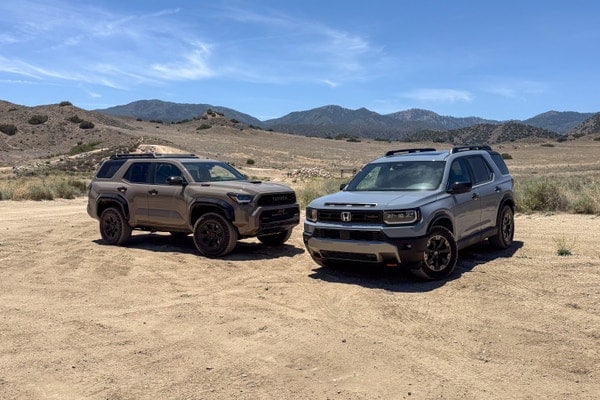
Off-Road Comparison Test: Honda Passport TrailSport vs. Toyota 4Runner TRD Pro
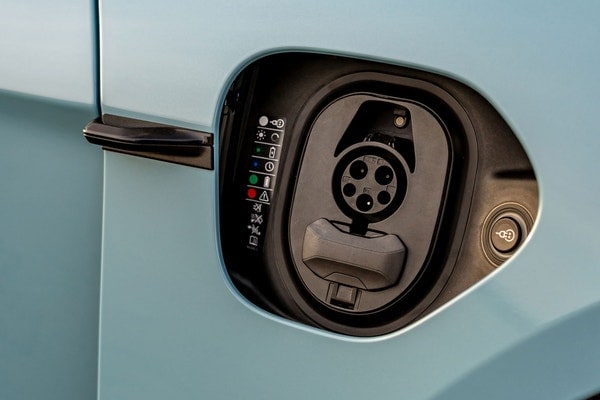
Edmunds Tested: Electric Car Range and Consumption
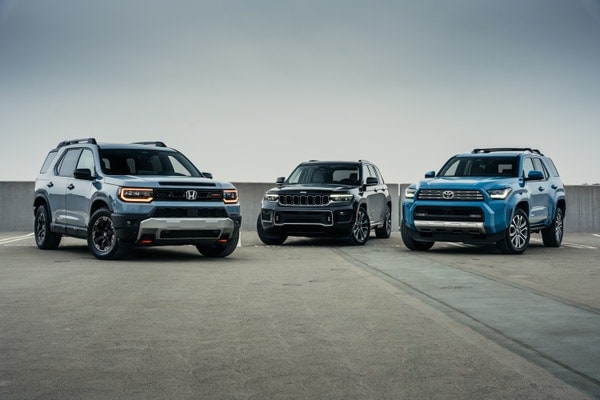
Honda Passport TrailSport vs. Toyota 4Runner Limited vs. Jeep Grand Cherokee Overland: Which Midsize SUV Should You Buy?

2025 Toyota Highlander Hybrid vs. Hyundai Santa Fe Hybrid: Which Three-Row SUV Should You Buy?
Compare 2012 Toyota Tundra trim levels
Helpful trims summary and side-by-side comparison chart
Reliability Ratings by RepairPal
3.5 out of 5 stars3.5/5Above Average
#6 out of 19 among Fullsize Trucks
RepairPal Reliability Ratings are based on the actual cost, frequency, and severity of unscheduled repairs and maintenance on make/model data for select 2008-2022 vehicles. The reliability of a specific vehicle may vary depending on its maintenance and driving history, model year, trim, and features.
Cost
$608/yr
vs. $752/yr
for Average Fullsize Truck
for Average Fullsize Truck
Frequency
0.79x/yr
vs. 0.98x/yr
for Average Fullsize Truck
for Average Fullsize Truck
Severity
19.5%
vs. 19.9%
for Average Fullsize Truck
for Average Fullsize Truck
powered by RepairPal
Toyota Tundra Owner Reviews
Most Helpful Owner Reviews
Trending topics
2012 Tundra defective air valves causing limp mode
1 out of 5 starsCJ, 03/25/2020
2012 Toyota Tundra Tundra 4dr Double Cab 4WD SB (4.6L 8cyl 6A)
I purchased a truck from Germain Toyota, a 2012 Tundra (4.6L).
I recently brought the truck back to this dealership when the check engine light came on, and it began losing acceleration while driving it. The truck received a diagnosis from them for $130. It was diagnosed with a p2440 code. Germain said it can be fixed for a repair cost of $2800-$3000. They said air injection valve … bank was stuck, has debris and possible water intrusion. Toyota said the truck can go into limp mode as a result which causes the truck to not shift correctly and loss of acceleration.
This nearly caused an accident. I was changing a lane in heavy traffic and suddenly there was no acceleration. It seemed like the truck wasn't shifting into gears correctly. First I thought the transmission was failing.
Toyota issued a recall on the 2007-2010 Tundras and Tacomas due to the defective air valves/air pumps, extending the mileage on these years to 10yr/150k. Then extended same in 2011 but stopped there.
The valves and pumps are made out of some cheap alloy, causing them to corrode easily and the system allows water to get into them. The repair parts offered for the repair apparently are made of the same metal so replacing then will probably only get you more time before they go bad again.
The truck has under 100k miles on it. I've always taken great care of the truck and have taken it into a Toyota dealer for all scheduled maintenance dates. Germain Toyota said it was out of warranty by about 5 months. Germain Toyota was helpless to do anything other than repair it for the insane repair cost. They didn't know why the warranty/recall was not extended to the 2012. Seems there are alot of other 2012 tundra owners with this problem as well so I'm not alone.
Toyota should own up to their defective parts and Germain Toyota should have some solutions other than offering to reinstall defective parts for a lot of money.
I doubt I will buy another vehicle from Toyota again.
2012 Tundra 4.6 double cab P2440 code / expense
3 out of 5 starscatndahats, 04/07/2019
2012 Toyota Tundra Tundra 4dr Double Cab SB (4.6L 8cyl 6A)
Great truck up until last week. All the good things about Toyota Tundras are true---great ride, pulling power, large dealer base nationwide. This "weak link" however can endanger you and your family, and is a very expensive repair.
This is my 4th Toyota since 2002 and 2nd Tundra, and I consider myself a Toyota fan.
My complaint is both towards the vehicle, the dealership base, and … Toyota corporation. Purchased this 2012 as a CPO from the dealership in 1/2016 with 35k miles. I have always believed it was a good company and product. Felt good knowing it was covered by Toyota's Certified Pre-Owned Warranty and had passed an intensive inspection prior to sale.
Buyer beware. Secondary Air Pump Failure:
At exactly 72,000 miles, the check engine / trac off lights came on and the truck went into limp mode.
Just know that this well documented defect in Toyota Tundras still continues. Toyota claims the problem was corrected with the 2010 models, but acknowledges there are plenty of dissatisfied customers posting all over the internet. I've talked to 2 dealers, and many emails and phone calls to Toyota corporate regarding the defect and seeking assistance. They know the defect is common in all Tundras, and will tell you the defect with the AIP continues, but will not help. All dead ends.
The Toyota corporation absolutely refuses to assist the customer even though we have the extended 7yr/100,000 mile power train warranty. Buyer beware, not if, but WHEN the repair WILL come, and it will cost you out of pocket anywhere from $2,000 - $4000. If you buy a 2010 Tundra or later, budget for this repair. I expect this defect will have a negative effect on your resale or trade value when you try to get rid of the vehicle.
It is a safety issue.
The symptoms:
Code: P2440 -- The truck now has exactly 72,000 miles, and has gone into "Limp" mode with the Check Engine / Trac Off lights flashing. Limp mode means no acceleration, no ability to drive uphill.
Even though they extended the warranty on this weak link in the vehicles built between 2007 - 2010, they do not acknowledge there is a manufacturing defect in later models. Extremely dangerous as the vehicle becomes sluggish and will not drive uphill or accelerate.
UPDATE 10-8-20:
Since this first AIP breakdown, had the tundra repaired out of pocket. Subsequently made the repair again after 6 months, very expensive twice. I still consider it a safety issue. Now our tundra has 83k miles. We went to our local dealer and their solution was to sell me a new Tundra. We were offered a favorable trade for a new tundra, but declined since I did not want a car payment for another 5 yrs. This year Toyota eliminated the 4.6 motor as an option, so who knows if the defect is fixed. I'm keeping mine and will just budget for additional repairs.
Otherwise the 2012 Tundra is a jewel. It rides great on long trips, and overall has held up very well, gets great gas mileage (18-20mpg) and sometimes better on the highway.
Update 4/21:
Still driving the tundra. Paid for, still rides good, looks good...no further repairs. Toyota still has not addressed the defect on post 2010 models, and has eliminated the 4.6 motor. Still gets 18-21mpg so we are going to keep on driving it.
Tundra can Tow
4.75 out of 5 starsdeejay8, 08/02/2012
2012 Toyota Tundra Tundra 4dr CrewMax SB (4.6L 8cyl 6A)
We got our Tundra from Cowboy Toyota.
Billy Goss and James Smith provided excellent service.
We previously owned a Nissan Frontier.
There is no comparison between the towing performance of the Tundra compared to the Frontier.
We just returned from our trip to
New Mexico.
The only "problem" was that we kept forgetting we were towing the camper.
The 4.6L engine worked great.
I'm glad we … didn't get the bigger engine because it was not needed.
So Far So Good
4.25 out of 5 starsthebigv21, 02/25/2013
2012 Toyota Tundra Tundra 4dr Double Cab 4WD SB (5.7L 8cyl 6A)
Truck now has 11K miles.
Had first synthetic oil change at 10K.
Averaging 15.2 mpg in combined driving.
Truck runs great and has similar MPG as tacomas I have owned in the past.
The horsepower and torque on this truck is something else.
I see negative reviews on here and I can't understand why.
The performance is what impresses me the most.
I am 6'4" and have plenty of room.
Kids can sit … in the back without any problem whatsoever.
This is a real truck, not meant for anyone who wants a car..
2012 Tundra Highlights
Double Cab
Tundra
| Base MSRP Excludes Destination Fee | $27,365 |
|---|---|
| Engine Type | Gas |
| Combined MPG | 18 MPG |
| Cost to Drive | $211/month |
| Seating | 6 seats |
rear wheel drive | |
| Max Towing Capacity | 4,500 lbs. |
| Warranty | 3 years / 36,000 miles |
Safety
Key safety features on the Tundra include:
- Tire Pressure Warning
- Stability Control
NHTSA Overall Rating
4 out of 5 starsThe National Highway Transportation Safety Administration offers independent analysis.
- Frontal Barrier Crash RatingOverall4 / 5Driver4 / 5Passenger3 / 5
- Side Crash RatingOverall5 / 5
- Side Barrier RatingOverall5 / 5Driver5 / 5PassengerNot Rated
- Combined Side Barrier & Pole RatingsFront Seat5 / 5Back SeatNot Rated
- RolloverRollover3 / 5Dynamic Test ResultNo TipRisk Of Rollover20.4%
IIHS Rating
The Insurance Institute of Highway Safety uses extensive crash tests to determine car safety.
- Small Overlap Front Driver-Side TestNot Tested
- Small Overlap Front Passenger-Side TestNot Tested
- Moderate Overlap Front Test – OriginalGood
- Moderate Overlap Front Test – UpdatedNot Tested
- Side Impact Test – OriginalGood
- Side Impact Test – UpdatedNot Tested
- Roof Strength TestNot Tested
- Rear Crash Protection / Head RestraintGood
People who viewed this also viewed
| 3.0 average Rating out of 34 reviews. |
| Starting at $40,275 |
| 3.5 average Rating out of 2 reviews. |
| Starting at $37,450 |
| 4.2 average Rating out of 14 reviews. |
| Starting at $37,000 |
Related Used 2012 Toyota Tundra info
Vehicle reviews of used models
- Porsche 718 Boxster 2020 Review
- Hyundai Veloster 2021 Review
- BMW Z4 2020 Review
- Fiat 500X 2021 Review
- Chevrolet Sonic 2020 Review
Popular new car reviews and ratings
- 2025 Volvo EX30
- 2026 Volvo EX30 News
- New BMW M4
- New Kia EV6
- 2026 Nissan Versa News
- 2024 Mercedes-Benz S-Class
- 2026 MDX
- 2024 Alfa Romeo Tonale
- 2024 Audi SQ7
- New BMW 7 Series
Research other models of Toyota
- New Toyota Tundra
- Toyota RAV4 Hybrid 2025
- New Toyota Camry
- 2024 Camry
- Toyota 4Runner 2025
- 2025 Toyota RAV4
- 2025 Highlander Hybrid
- Toyota Highlander 2025
- 2025 Prius
- 2025 Toyota Grand Highlander
Research similar vehicles
Other models
- New Mercedes-Benz Gle-Class for Sale in Carrollton, GA
- Used Lexus Rz-450E in Elmont, NY 2023
- Used Lexus Is-350 in Clermont, FL 2023
- Used Bentley Bentayga-Ewb in Allentown, PA 2024
- Used Mitsubishi Eclipse-Cross in Clearfield, UT 2025
- Used Lexus LX-450 in Mandeville, LA 1997
- Used Cadillac Escalade-Iq in Waco, TX 2026
- New Volvo Xc40-Recharge for Sale in Elgin, IL
- Used Chrysler Town-And-Country in Summit, NJ 2016
- New Kia Niro for Sale in Detroit, MI
